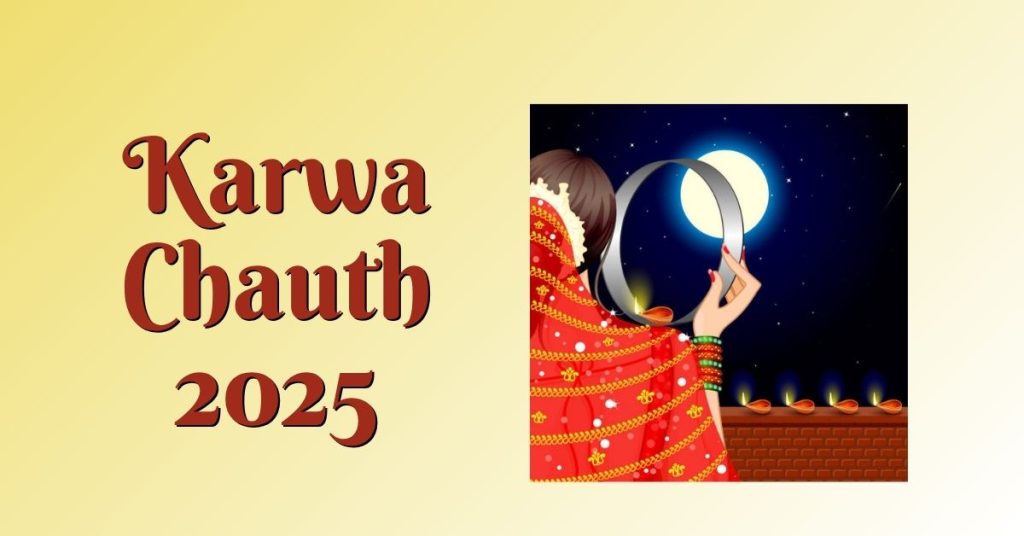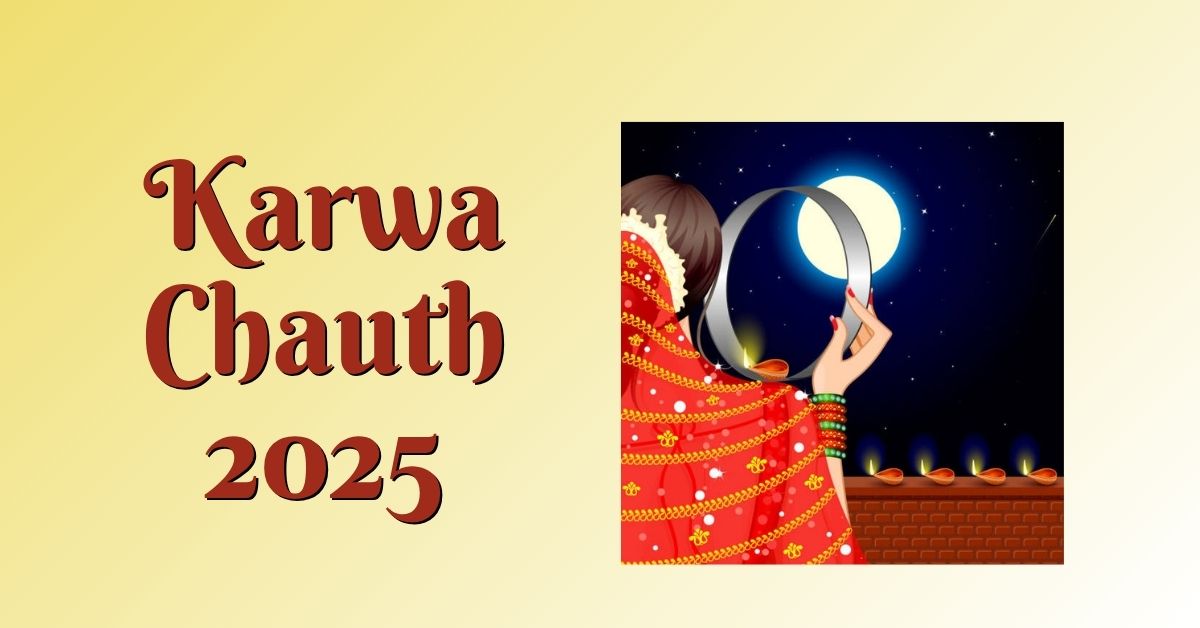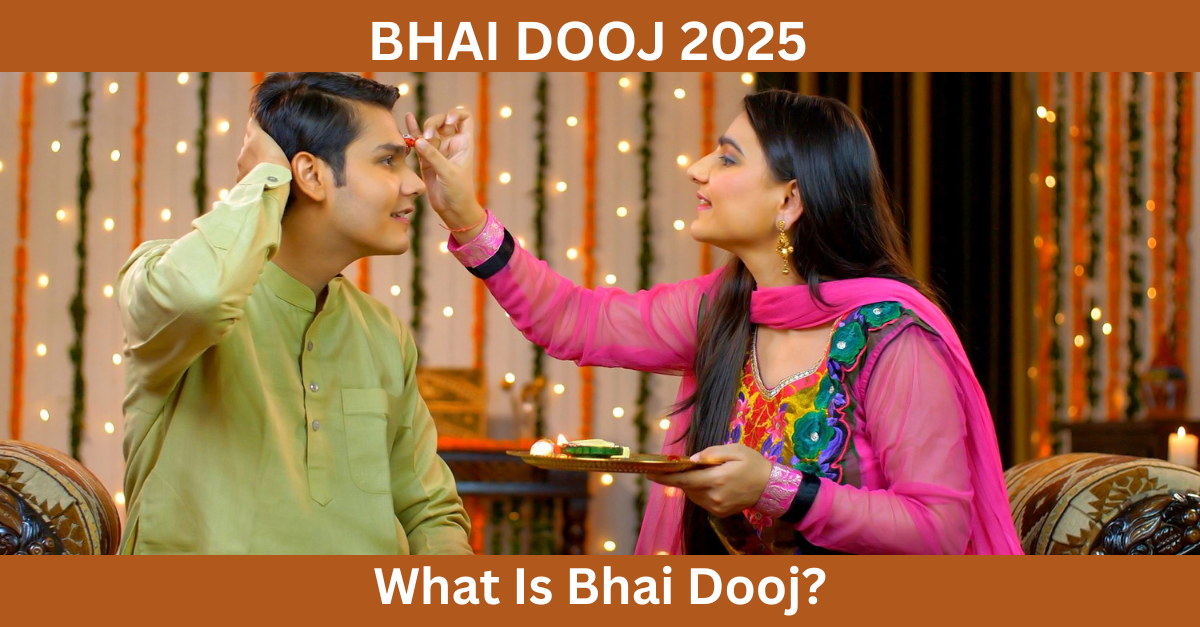Karva Chauth is one of India’s most symbolic festivals, observed by married Hindu women across northern states such as Punjab, Haryana, Uttar Pradesh, Rajasthan, and Himachal Pradesh. It is a day of fasting and prayer, reflecting devotion, emotional strength, and the enduring bond between husband and wife.
Women fast from sunrise until the moon appears, seeking blessings for their husbands’ long life and prosperity. In recent years, many husbands have also joined the ritual to express love and equality. Beyond its religious aspects, Karva Chauth celebrates unity, culture, and the power of faith within families.
The observance combines mythology, tradition, and modern interpretations, keeping the festival meaningful even in contemporary times.
The Origin and Historical Meaning
The name “Karva Chauth” is derived from two Sanskrit words — Karva meaning an earthen pot used during rituals, and Chauth meaning the fourth day of the waning moon (Krishna Paksha) in the Hindu month of Kartik, typically in October or November.
Historically, the festival has dual significance. Apart from being a prayer for marital well-being, it coincides with the start of the Rabi crop season, symbolizing prayers for prosperity and good harvest. In earlier centuries, women whose husbands served in military campaigns observed the fast for their safety. The tradition gradually evolved into a celebration of marital dedication and emotional strength.
Over time, communities incorporated mythological stories, social customs, and symbolic gestures that gave Karva Chauth its distinctive cultural depth.

Stories and Legends Behind Karva Chauth
The festival is deeply rooted in Indian mythology and folklore. Several stories explain its origins and significance:
The Tale of Queen Veervati
Queen Veervati, the only sister among seven brothers, observed her first Karva Chauth while visiting her parents. Seeing her suffer from hunger and thirst, her brothers tricked her by reflecting a lamp through a mirror to resemble the moon. When she broke her fast prematurely, news of her husband’s death arrived. Heartbroken, she prayed to Goddess Parvati, who guided her to observe the fast again with complete devotion. Moved by her sincerity, the gods restored her husband’s life.
The Story of Savitri and Satyavan
Savitri’s unwavering love for her husband Satyavan compelled her to confront Yama, the God of Death. When Yama refused to release Satyavan’s soul, Savitri followed him and pleaded for mercy. Yama eventually granted her a boon for children, realizing that granting it would require her husband’s life. This story symbolizes determination, loyalty, and the triumph of devotion over destiny.
The Legend of Karva
A devoted woman named Karva once saved her husband from a crocodile attack by binding the animal with cotton thread and calling upon Yama for justice. Her courage and purity of heart compelled Yama to revive her husband and punish the crocodile. Her strength and faith became a lasting symbol of marital devotion.
Draupadi’s Fast in the Mahabharata
When Arjuna went into exile, Draupadi sought guidance from Lord Krishna on how to ensure his safety. He narrated how Goddess Parvati once observed a fast for Lord Shiva’s protection. Draupadi followed the same ritual, and Arjuna returned unharmed. This story illustrates faith’s protective power and its importance in Hindu belief.
These tales collectively emphasize courage, love, and the sacred responsibility of marriage, forming the foundation of the Karva Chauth observance.
Rituals and Customs
Preparations Before the Festival
The preparations for Karva Chauth begin a few days earlier. Women shop for new clothes, jewellery, cosmetics, and decorative items for their thali (ritual plate). Mehndi (henna) designs are applied on hands, symbolizing beauty and good fortune.
The Sargi Tradition
Before sunrise, married women eat a special pre-dawn meal known as Sargi, which is traditionally prepared by their mothers-in-law. The platter usually includes fruits, dry fruits, sweets, and light Indian dishes like parathas. This meal provides energy for the day-long fast and carries emotional significance as a gesture of blessing from the elder woman in the family.
Fasting During the Day
The fast, known as Nirjala Vrat, is one of the strictest in Hindu customs, as women refrain from both food and water. The fast continues until the moon rises. Many women spend the day praying, applying mehndi, and preparing their pooja thalis.
Evening Prayers and Rituals
As dusk approaches, women gather in groups, often with neighbors and friends, dressed in festive attire. They sit in a circle with decorated thalis containing a lamp (diya), sweets, coconuts, fruits, and a small pot (karva) filled with water. An elderly woman narrates the Karva Chauth Katha, retelling the stories of Veervati, Savitri, and Karva. During this ritual, women pass their thalis in a circular motion while singing traditional songs.
Moonrise and Fast Breaking
When the moon rises, women view it through a sieve or a transparent cloth and offer arghya (water) to it while chanting prayers. After this, they look at their husbands through the same sieve, symbolizing the connection between divine blessings and marital love. The husband then offers his wife water or milk, ending her fast. The ritual concludes with a family meal, often including festive dishes like sabut dal, pooris, rice, and traditional sweets.
Regional Practices
Punjab and Haryana
In Punjab and Haryana, the celebration begins with great enthusiasm. The Sargi platter is elaborate, including fenni (sweet vermicelli), fruits, and sweets. The thali batana ritual, where women rotate their decorated thalis seven times while singing devotional songs, is an integral part of the ceremony. It’s also a time for social bonding as women visit each other and exchange decorated karvas.
Uttar Pradesh and Rajasthan
In Uttar Pradesh, Sargi may feature feni in milk, coconuts, sweets, and savory items. Women often draw a symbolic image of the moon on the ground using rice paste, offering kumkum, flowers, and sweets before presenting water to it. In Rajasthan, a traditional phrase accompanies the moon offering: “Dhapi ki ni dhapi? Jal se dhapi, suhaag se na dhapi,” meaning “Have you quenched your thirst? With water yes, but not with love.” This poetic exchange reflects the emotional depth of the ritual.
Himachal Pradesh and Delhi
In Himachal Pradesh and Delhi, Karva Chauth blends traditional values with modern celebrations. Families host small gatherings, and husbands often gift jewelry or clothes to their wives as a gesture of appreciation. Urban households combine cultural roots with contemporary expressions of affection, keeping the spirit of the festival alive.
The Modern Perspective
The significance of Karva Chauth has evolved over time. Today, it is seen not only as a symbol of devotion but also as a celebration of companionship and mutual respect. Many couples fast together, highlighting equality in marriage.
The festival also reflects India’s social transition, where ancient rituals adapt to modern lifestyles. Social media platforms have further popularized the event, showcasing traditional attire, rituals, and moonrise moments. Despite modernization, the emotional value and cultural depth of Karva Chauth remain unchanged.
Health awareness has also become part of the modern celebration. Nutritionists recommend balanced Sargi meals rich in fiber and hydration before dawn. Women with medical conditions often observe lighter versions of the fast, reflecting a balanced approach between faith and health.
Observing Karva Chauth Mindfully
-
Plan your Sargi wisely: Include fruits, dry fruits, and light grains for steady energy.
-
Stay hydrated before sunrise: Drink plenty of water before the fast begins.
-
Avoid heavy tasks: Conserve energy for prayers and rituals.
-
Understand the meaning: Focus on the emotional connection and family unity rather than only tradition.
-
Health comes first: If fasting becomes difficult, it’s acceptable to break it respectfully.
Frequently Asked Questions
Yes. Many unmarried women fast for their future husbands or to seek blessings for a happy married life.
Traditionally, yes. The fast is nirjala, meaning no food or water until the moonrise. However, some people follow modified versions for health reasons.
The sieve represents filtering worldly distractions. It symbolizes focusing purely on love and devotion while connecting the divine with the marital bond.
The thali typically includes a diya (lamp), water, roli (vermillion), rice, sweets, coconut, and flowers, all used during the prayer and offering rituals.
In 2025, Karva Chauth will be celebrated on Friday, October 10, according to the Hindu lunar calendar.









